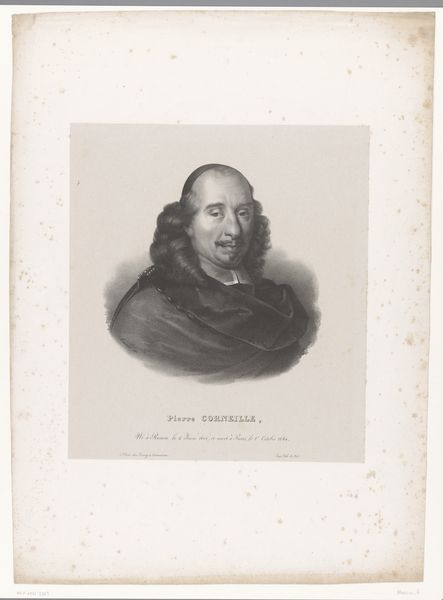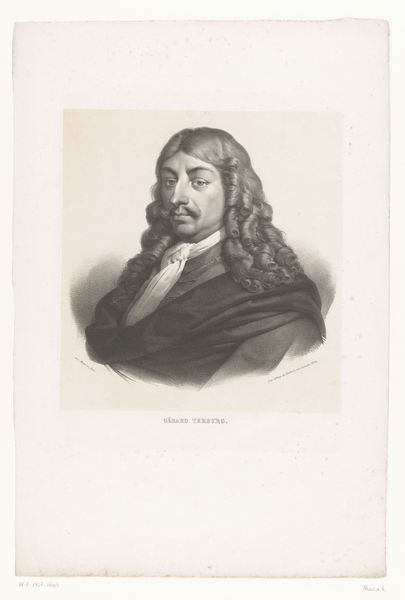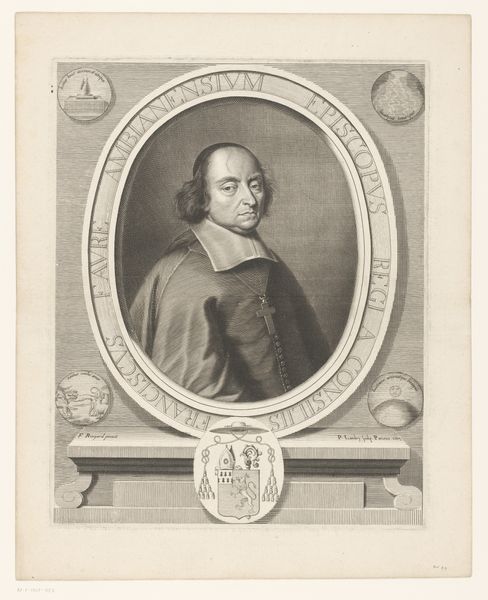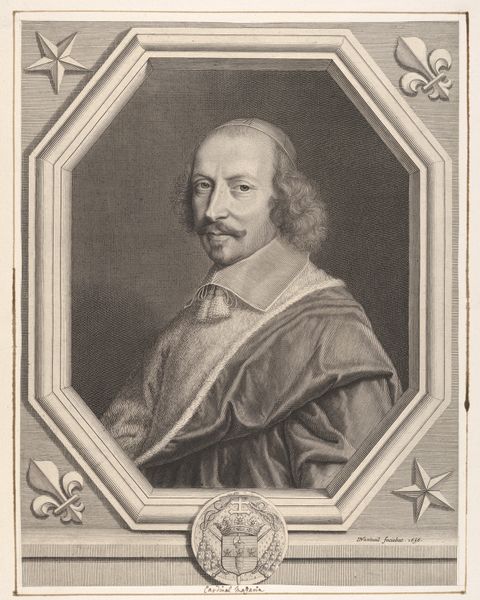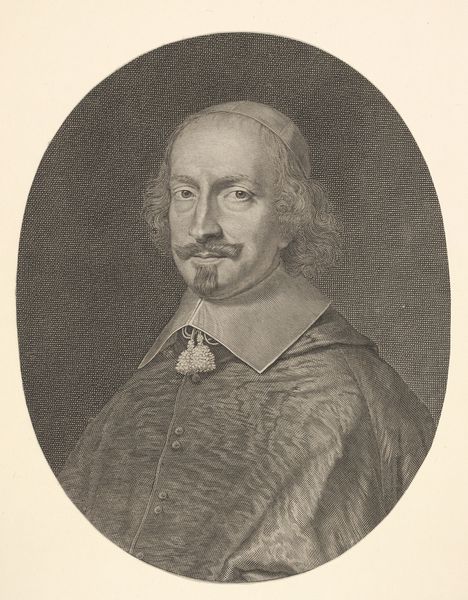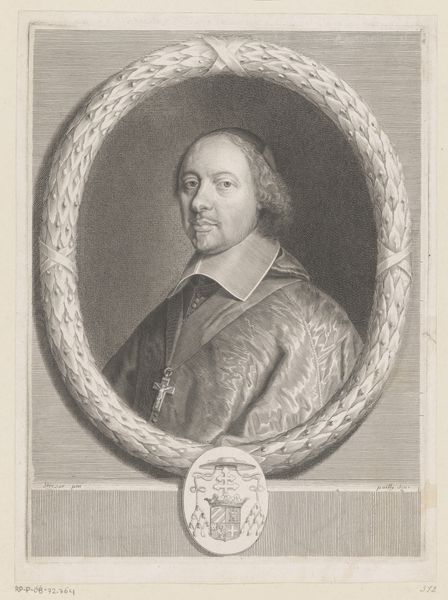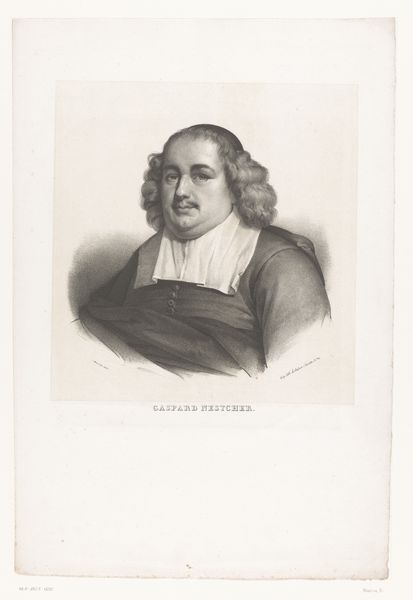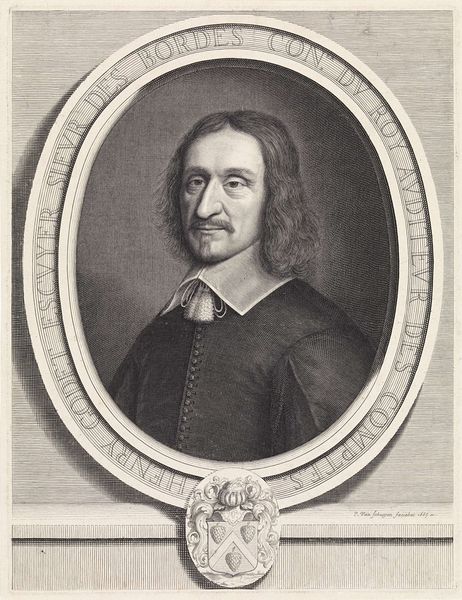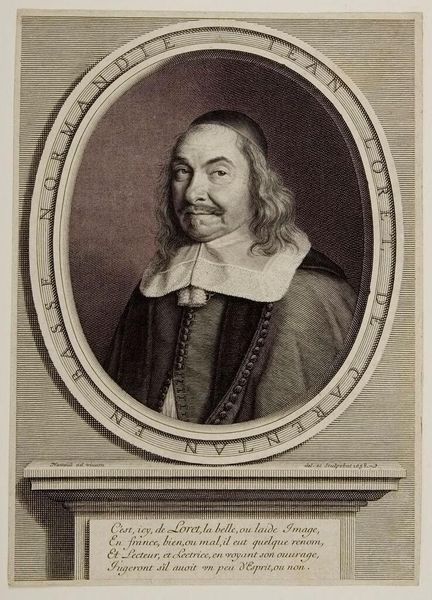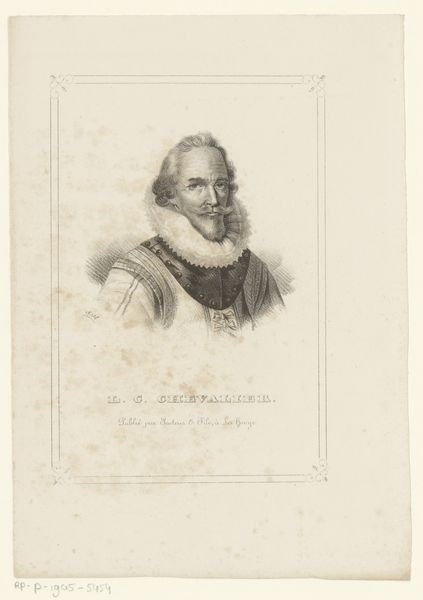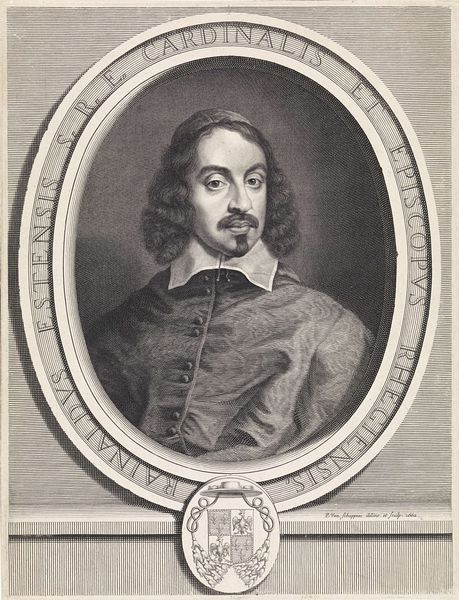
drawing, paper, ink, pencil
#
portrait
#
pencil drawn
#
drawing
#
light pencil work
#
pencil sketch
#
paper
#
ink
#
pencil drawing
#
pencil
#
portrait drawing
#
pencil work
#
history-painting
#
academic-art
#
realism
Dimensions: height 482 mm, width 317 mm
Copyright: Rijks Museum: Open Domain
Curator: This is a portrait of Pierre Corneille, a notable French tragedian. The piece, created between 1825 and 1842, is rendered in pencil and ink on paper, and it's attributed to Nicolas Maurin. Editor: He has such an intense, almost piercing gaze. Even in a simple drawing like this, you get a real sense of his presence, of his intellect. Curator: Yes, Maurin captures Corneille with a kind of reserved dignity. Notice the academic art style – a reflection of the period's emphasis on realism and historical painting. These portraits served not only as representations but as affirmations of cultural and intellectual authority. Editor: The light pencil work gives it an almost ghostly feel, doesn’t it? As if he is a memory surfacing on the page. But also, it’s the wig! It makes him feel oddly contemporary, like a rock star brooding for his next album cover. Curator: That is an interesting take! Of course, those portraits also were a product of the institutions around art; intended to convey and project a desired image of historical figures to shape public perception. It shows the intersection of power and artistic representation. Editor: Absolutely, and the subtle detailing really adds to the impact. The lines of his face, the shading of the shawl, they all seem meticulously rendered. It’s striking how the simplicity of the medium – pencil on paper – contrasts with the gravity of the subject. Curator: Indeed. It invites us to consider the complex layers of identity, artistic intention, and the social role that portraits held during that era. Editor: Looking at this drawing, I feel invited into a silent conversation across centuries, considering his plays, their impact and all of history. Curator: It encapsulates how artists and institutions sought to immortalize, and in many ways idealize, significant figures, reinforcing their cultural status and contributing to the formation of national identity. Editor: Absolutely, it becomes something much richer, I suppose. Thank you! Curator: A fascinating piece for that precise reason, thank you!
Comments
No comments
Be the first to comment and join the conversation on the ultimate creative platform.
